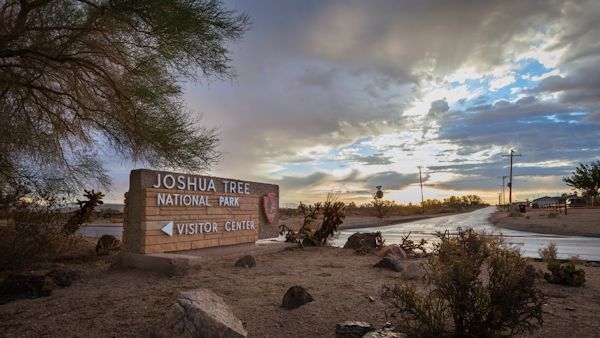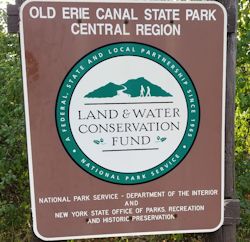SEJournal Online is the digital news magazine of the Society of Environmental Journalists. Learn more about SEJournal Online, including submission, subscription and advertising information.
 |
| A Senate public lands bill offers sweeping conservation plans, including a significant expansion acreage at five national parks. Among the beneficiaries are California's Joshua Tree National Park, whose Oasis Visitor Center in Twentynine Palms is shown above in August 2014. Photo: National Park Service/Evan Heck, courtesy Flickr Creative Commons. Click to enlarge. |
TipSheet: Senate-Passed Public Lands Bill “An Old-School Green Deal”
The package of public lands legislation passed by the Senate (may require subscription) on Feb. 12 is a big deal — a cornucopia of national, regional and local stories that has not been fully, er, mined yet, but which will hit headlines again when the House takes it up after the mid-February recess.
It’s actually a collection of some 110 individual bills (see more below). And while one or more may seem parochial, nationally it’s important news.
For example, the legislation would permanently reauthorize the Land and Water Conservation Fund, or LWCF. That’s a goal that has eluded conservationists for decades. The LWCF, created in 1964, takes a portion of the revenues from offshore oil and gas drilling and spends it on protection of parks, forests and water supplies in all 50 states. (Editor’s Note: For reporting angles on the LWCF, see our related TipSheet.)
Overall, this is classical distributive politics. There’s something in it for almost everyone. It’s not just bipartisan, but passing the Senate 92-8 it’s unanimous in a way you rarely see in Congress anymore.
Some may call it pork, but Raúl Grijalva (D-Ariz.), chairman of the Natural Resources Committee, called it “an old-school green deal.”
All eyes now are on the House, where the bill’s destiny is very much in the hands of Grijalva (and to a lesser extent ranking GOPer Rob Bishop of Utah).
Procedurally, if the margin of support there is comparable to that in the Senate, Grijalva could call the bill to the floor under a streamlined “suspension of the rules” process that waives requirement for committee action, prohibits amendments, limits debates and requires a two-thirds majority for passage.
 |
| The Senate legislation would permanently reauthorize the Land and Water Conservation Fund, a goal that has eluded conservationists for decades. Click to enlarge. |
Use of this procedure is up to the speaker — and Nancy Pelosi can count votes. Some House amendments, and a longer process, may be more likely.
Why it matters
At a time when the executive branch is trying enthusiastically to mine and drill as much federal land as it can, conservation becomes especially important. Nature is worth loving and leaving alone. It also makes people happy and supports tourist economies that often bring more local dollars than extractive industries.
The Senate lands bill significantly expands at least five national parks, creates at least five national monuments, bars mining on lands near two national parks and designates 1.3 million acres as wilderness (possibly the most protected category).
The measure also protects from development hundreds of miles of wild and scenic rivers, and funds protection for some 380 bird species under the Neotropical Migratory Bird Conservation Act.
But it also includes language expanding access for hunters and fishers to federal lands, and it includes dozens of land swaps and conveyances, which often put parcels of federal land into private use. It even promotes helium extraction, tries to improve wildland fire operations and sets up a national volcano early warning and monitoring system.
Story ideas
- What land unit in the bill is near you or in your state?
- What, if any, involvement have your congresspeople and senators had in its inclusion?
- What are the positions of the environmental groups, mining and logging groups, drillers, etc.?
- Has the provision affecting your land unit ever moved as separate legislation?
- What kind of quid pro quos can you find in the provisions you are interested in?
Reporting resources
Finding the land units (or issues) that spark interest for your audience may be a key task for you. One way into the question may be a check-in with members of your Congressional delegation to see what parts they are interested in. Or get the bill text and search on the state or place name that interests you.
Another way is to skim the lists done by other journalists who have burned midnight oil poring over the full 662-page bill. Some have maps that make an overview much easier. Check reports from the Washington Post (may require subscription) and the National Parks Traveler, for example.
- Text of the full bill as amended (S. 47), and title-by-title summary
- Land and Water Conservation Fund Coalition, an advocacy group focused on supporting the LWCF
- National Parks Traveler, an independent, nonprofit news outlet focused on parks and related issues
- House Natural Resources Committee (Democrats, Republicans). This is where the next game in the series will be played.
- Property and Environment Research Center, a free-marketeer think tank devoted to lands issues
- National Parks Conservation Association, a nonprofit group advocating park and public land conservation
- The Wilderness Society, a nonprofit group advocating conservation, via wilderness designation, often of lands under the National Forest Service and Bureau of Land Management
* From the weekly news magazine SEJournal Online, Vol. 4, No. 8. Content from each new issue of SEJournal Online is available to the public via the SEJournal Online main page. Subscribe to the e-newsletter here. And see past issues of the SEJournal archived here.

















